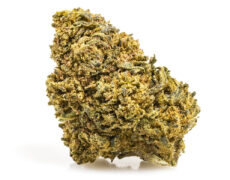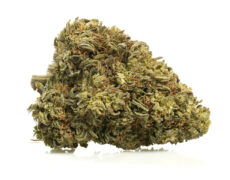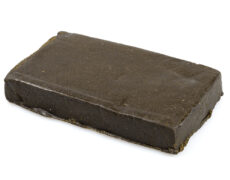Modified on: 03/04/2024
ALBINO WEED: SOMEWHERE BETWEEN REALITY AND FANTASY
Many cannabis enthusiasts wonder whether an albino variant exists.
However, if you have taken a trip around the web, you will have noticed some confusion about its existence, is there not?
So, to shed some light on the matter, in this article, we will look at whether albino cannabis exists and how it differs from ordinary CBD cannabis.
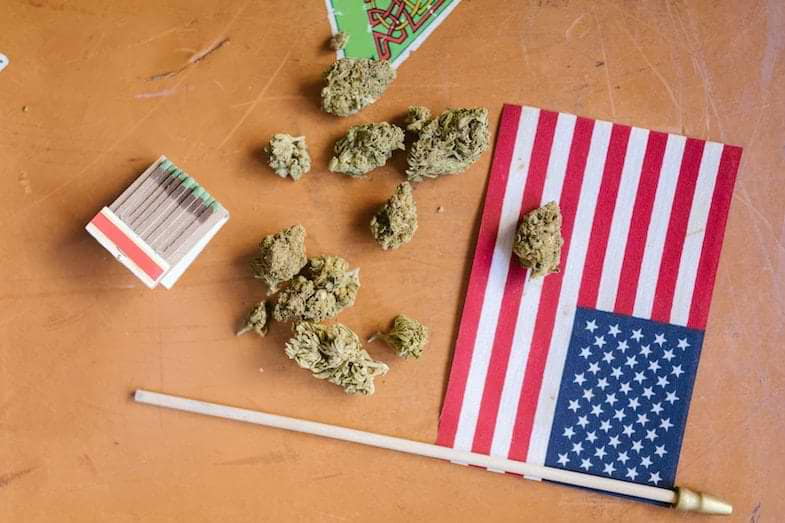

Cannabis Plant: Generic Characteristics
The cannabis plant, a versatile and resilient species, exhibits a wide array of generic characteristics that captivate cultivators and enthusiasts alike. Beyond the commonly recognized green coloration, cannabis plants can manifest unique traits, including instances of albinism in plants. By the way, what are the generic characteristics of cannabis? Let us shed light both on the well-known attributes and on the intriguing phenomena such as albinism.
Understanding Albinism in Cannabis:
Albinism in plants, particularly in cannabis, is a rare occurrence marked by the absence of chlorophyll, resulting in the development of white cannabis plants and even white weed buds. This phenomenon, referred to as CBD cannabis albinism, poses challenges to the plant’s survival due to the crucial role chlorophyll plays in the process of photosynthesis – the plant’s ability to convert light into energy, a vital compound for growth.
Genetic Factors and Recessive Traits:
Cannabis albinism is primarily attributed to genetic factors and is often considered a recessive trait within the plant’s genetic makeup. Very early research into this fascinating occurrence has uncovered that certain genetic traits contribute to the manifestation of albinism in cannabis. These genetic factors can be inherited, influencing various aspects of the plant’s physiology.
Environmental Influences:
Apart from genetic considerations, environmental factors play a significant role in determining the fate of cannabis plants exhibiting albinism. Instances of light bleaching, where intense light exposure causes a whitening effect on parts of the plant, can be mistakenly associated with albinism. However, true cannabis albinism involves a lack of pigmentation throughout the entire plant, leading to a distinct white coloration.
Growth Challenges and Unique Characteristics:
Cannabis plants with albinism face challenges related to their ability to undergo the process of photosynthesis effectively. The lack of chlorophyll limits their capacity to produce energy, hindering plant growth. Despite these challenges, some instances of albinism result in unique and visually striking features, such as white weed buds and a distinctive appearance during different stages of growth.
Adequate Lumens and Plant Development:
To address the limitations associated with albinism, growers must take proactive measures. Providing adequate lumens through artificial light sources becomes crucial for compensating the deficiencies caused by the absence of chlorophyll. This strategic approach aims to ensure that the cannabis plant gains slight, yet essential, levels of energy to support its development.
Albino plant growing in the sewers of New York: truth or urban legend?
The question alone sounds like a trap.
It is the typical story told to someone by the friend of a distant cousin in a remote town in an unspecified North American state. Unfortunately, it is one of those stories whose origin would be complicated to discover because you would have to pull the thread hundreds of thousands of kilometres for nothing.
But if you want to know this legend, I’ll indulge you now.
An extraordinary variety of marijuana, called New York White, grows under the skin of white plants in the Big Apple.
A bit bizarre, isn’t it? That’s the myth part.
Of course, no marijuana plant can be grown out of the sunlight, underground, in a sewer, without light…
So let’s forget these kinds of urban legends that fall under their weight: the marijuana plant and the CBD flowers need a light source for their development, be it natural or artificial—no underground cultivation.
So does white marijuana exist?
Yes.
Let’s find out why.
Read also: Cannabaceae plants: all types and benefits
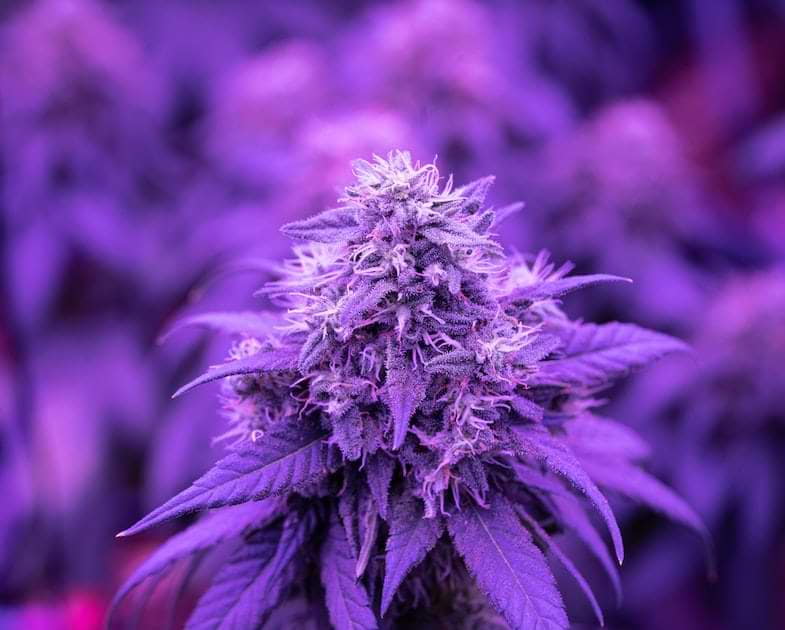

So, how to explain albino weed? The answer is more straightforward than you think.
When images of milky white marijuana buds started circulating on the Internet, the first reaction was to think of a hoax.
And no wonder.
If we take absurd stories like those of sewer marijuana as a reference, growers are becoming increasingly sceptical of what is being said.
Photoshopped pictures, optical effects, attention-seeking… Of course, there are always reasons why this kind of news can be a little suspect, but when botanical experts give their opinion on the matter, there is little left to refute.
Experts have confirmed that these phenomena do occur but are not strictly related to light deprivation and that there are other reasons.
Let us, therefore, see why.
Difference between albino weed and discoloured cannabis plants
As you might imagine, an almost albino cannabis plant or white cannabis plant is not the same thing as a discoloured plant.
What is the difference?
Well, it is straightforward. A discoloured marijuana plant, as the name suggests, is a green plant, that has lost its colour because it has been too close to the bulb or exposed to too much light.
In such cases, the cannabis grower is responsible for the plant’s paleness, which has caused it to lose its chlorophyll photopigments and, worse still, its quality.
As a decorative plant, it is extremely rare and has a very striking colour effect, but when it comes to smoking for personal use (in countries where it is permitted), it will have lost much of its value.
So what distinguishes it from an albino plant?
The secret of an albino plant does not lie in the lack of skill of the grower but is hidden in the genetics of the plant.
Let me explain.
Far from being plants bleached by very much light, it is a puzzling natural phenomenon called variegation. Variegation is a rare but genuine genetic anomaly. So no, it is not an optical trick or a deception to make people believe what it is not, nor is it a fairy tale about a mysterious cannabis strain growing in the sewers of New York.
Some genes control the production of chlorophyll in cannabis, and, as you may already know, these pigments are responsible, among other things, for the green colouring of plants.
Variegation is a mutation that disrupts the presence of chlorophyll in the plant, giving rise to those distinctly albino traits that can manifest in two ways.
- in a single area of the plant (e.g. only in the buds);
- in several areas of the plant interspersed with pigmented areas (as if the green and albino patterns were intertwined).
In an extreme case, the origin of the plant’s white colour would be in the so-called double albino gene.
But that being the case, the whole marijuana plant would be white and would not be able to do the process of photosynthesis (and remember that it is chlorophyll that enables it to synthesise light) and would die in a short time.
So, in conclusion, it would be challenging to find a plant with these characteristics and, above all, one that was able to develop.
Read also: California and marijuana: the origin of the best cannabis strains
Albino Cannabis Plants: Tips for Successful Growth
Albino cannabis plants, characterized by their distinctive white appearance due to a lack of chlorophyll, present a rare occurrence in the world of cannabis cultivation. While albino plants die their traits can be captivating, they come with challenges that growers need to navigate for successful cultivation. This article delves into key aspects of albino plants and provides tips to optimize their growth.
Albinism in cannabis is a recessive genetic trait, manifesting in white cannabis plants with albino characteristics. This genetic mutation results in a massive genetic disadvantage cannabis albino is, as the lack of chlorophyll, an essential component in the photosynthesis process, hinders the plant’s ability to convert light into energy. Albino plants face an increased risk of early death, making their survival a complex challenge.
To avoid albino cannabis plants, it is crucial to start with quality genetics when obtaining cannabis seeds. Early research found that environmental factors, including light intensity, heat stress, and powdery mildew, contribute to the occurrence of plant albinism in cannabis. Additionally, false albino occurrences may arise from light bleaching, emphasizing the need for careful consideration of environmental conditions during the plant’s growth.
Tips for Growing Albino Cannabis Plants:
- Provide Adequate Light: Albino marijuana plants require special attention to lighting conditions. Using artificial light sources is essential to compensate for their lack of chlorophyll. Ensure that the plants receive adequate lumens to support their growth.
- Monitor Environmental Factors: Be vigilant about environmental conditions such as temperature, humidity, and airflow. These factors play a significant role in albino cannabis plant’s survival and overall health.
- Backcross Strains with Albino Traits: In the pursuit of albino cannabis cultivation, consider backcrossing strains with albino traits to enhance the chances of producing albino plants. This can be a delicate process that requires careful genetic selection.
- Early Intervention: Recognize signs of albino characteristics during the seedling stage and take early intervention measures. Providing a nurturing environment from the beginning can contribute to the plant’s well-being.
- Genetic Diversity: Introduce genetic diversity to mitigate the risks associated with albino cannabis plant. This can be achieved through careful selection of cannabis seeds and the incorporation of variegated plants.
Cultivating albino cannabis plants requires a deep understanding of the various genetic factors and environmental factors influencing their growth. While albino cannabis plant pose challenges, growers can navigate them with the right knowledge, providing albino marijuana plants with the support needed for their survival and potentially witnessing their unique, white appearance amid the green cannabis landscape.
Conclusions
In this article, we have seen the real story about albino weed.
Leaving aside the New York sewer legend for a moment, we have seen how to distinguish between white weed bleached and albino cannabis.
While the former is due to excessive exposure to light which damages the quality of the final product, the latter is white due to a genetic issue.
We hope you enjoyed this post and we suggest you to visit our CBD online Shop!
On Justbob you will find a lot of products of the best quality of CBD weed and legal hash.


